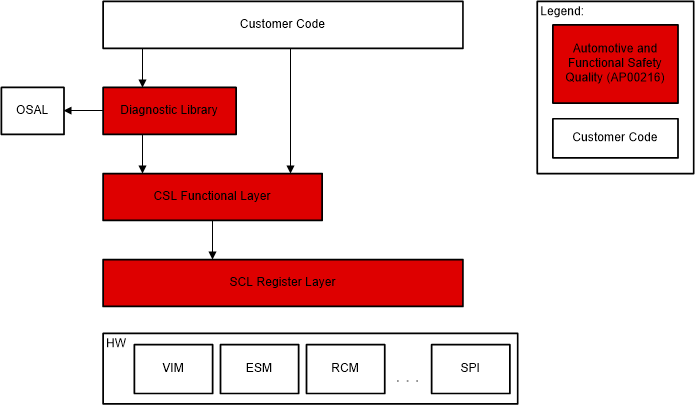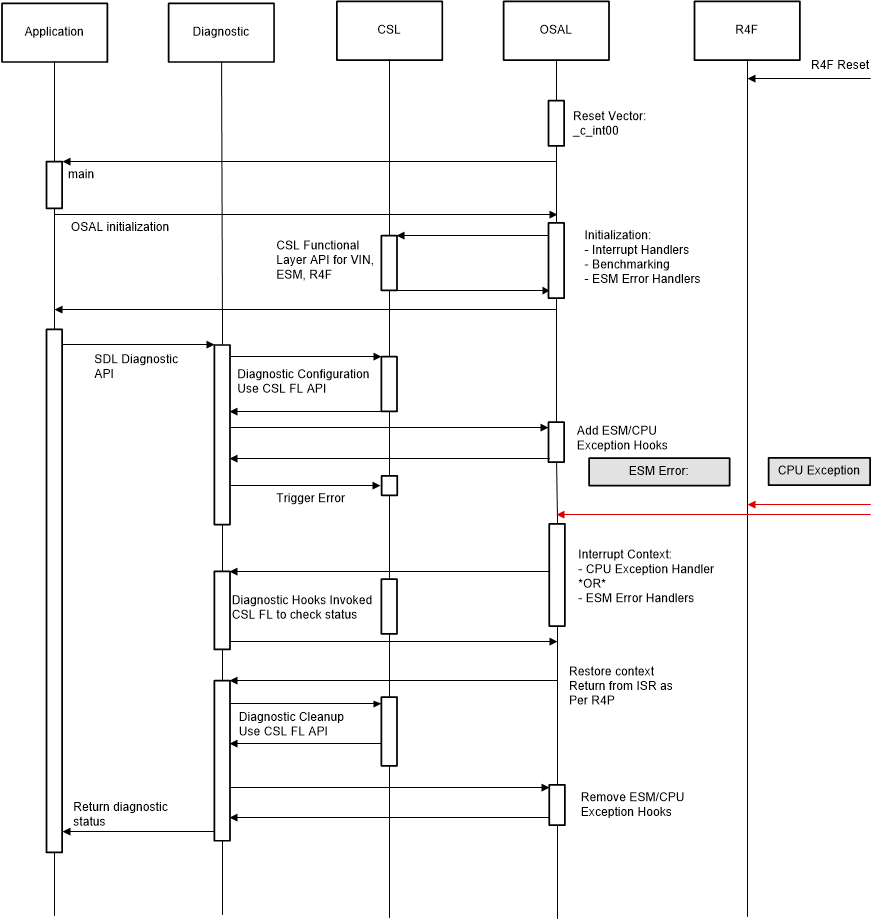TIDUEY9 April 2021
2.4.2.3 mmWave Safety Diagnostic Library (SDL)
The mmWave SafeTI Diagnostic Library (SDL) is a collection of functions for access to safety functions and response handlers for various safety mechanisms for TI mmWave sensors. These functions assist in the development of software applications involving functional safety.
The SDL provides a collection of diagnostic APIs and low-level driver functions to access the diagnostic features. These safety mechanisms are defined in the mmWave Device Safety Manual.
Chip Support Library (CSL) Register and Function Layer is a hardware abstraction layer that provides a low-level API for the application code to interface to the hardware.
Diagnostics Library (diag) is the Software diagnostics library that provides APIs to access Safety functions and inject/detect faults. The SDL uses CSL to interface to the hardware.

Figure 2-9 SDL Layer Architecture
Red blocks are Function safety quality, all relevant documents and reports are provided in SDL package.
The Diagnostic Library provides the implementation of the diagnostics specified in the mmWave Device Safety Manual.
Diagnostic test categories (based on time duration):
- Single-Shot Diagnostics
- Periodic Diagnostics
Diagnostic Test Tupe-
- Fault insertion diag: ECC, Parity, MPU diagnostics.
- Self test diag: LBIST, PBIST, DCC, CCM diagnostics.
- Peripheral IO diag: peripheral loopback, Nerror In/Out diagnostics
- Readback of static config registers: diagnostics to periodically check static configuration registers
Typical DIAG Test Flow
- Operating System Adaptation Layer – OSAL layer will define the ability to add & delete hooks. Hooks can be added to ESM error and CPU exceptions.
- HW Configuration – HW IP registers which need to be configured in order to execute the diagnostic.
- CPU Exception/ESM Error – Diagnostic generate ESM error/CPU exceptions
- All diagnostic handler(s) are internal to the diagnostic layer.

Figure 2-10 DIAG Test Flow